
Peter O’Connor’s Olympic Climb
At the 1906 Intercalated Games in Athens, Greece, athletes from Ireland had to be classed as British competitors due to the lack of an Irish Olympic Council. Irishman Peter O’Connor protested this by scaling a flagpole during his medal ceremony and replacing the British flag with an Irish one.
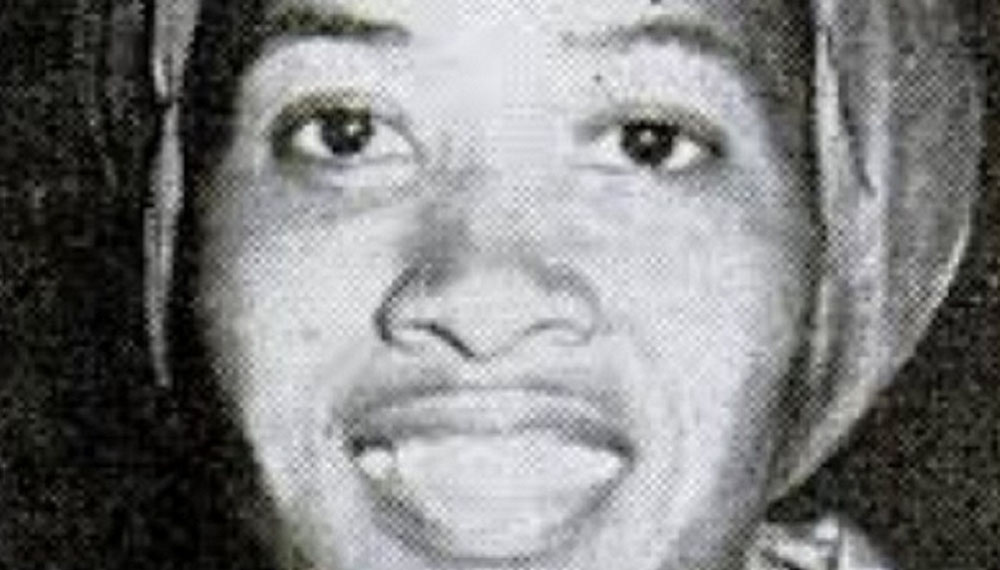
Rose Robinson’s Defiance
During the 1959 Pan American Games, high jumper for the U.S. Women’s Track and Field team Eroseanna “Rose” Robinson remained in her seat while the national anthem played at the national ceremonies. She knelt for six months before being arrested for tax evasion. Robinson was protesting America’s role in the Cold War and racial injustice.
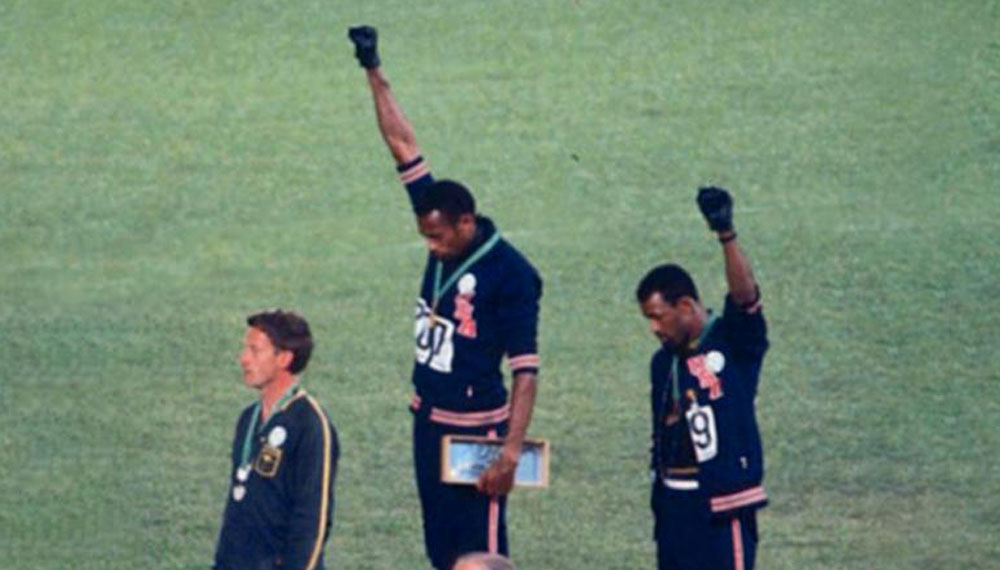
Smith and Carlos’ Fists
American sprinters Tommie Smith and John Carlos medaled in the 200-meter final at the 1968 Olympic Games in Berlin. For the medal ceremony, they both decided to wear black gloves and black socks as they bowed their heads and raised their fists into the air, protesting racial discrimination.
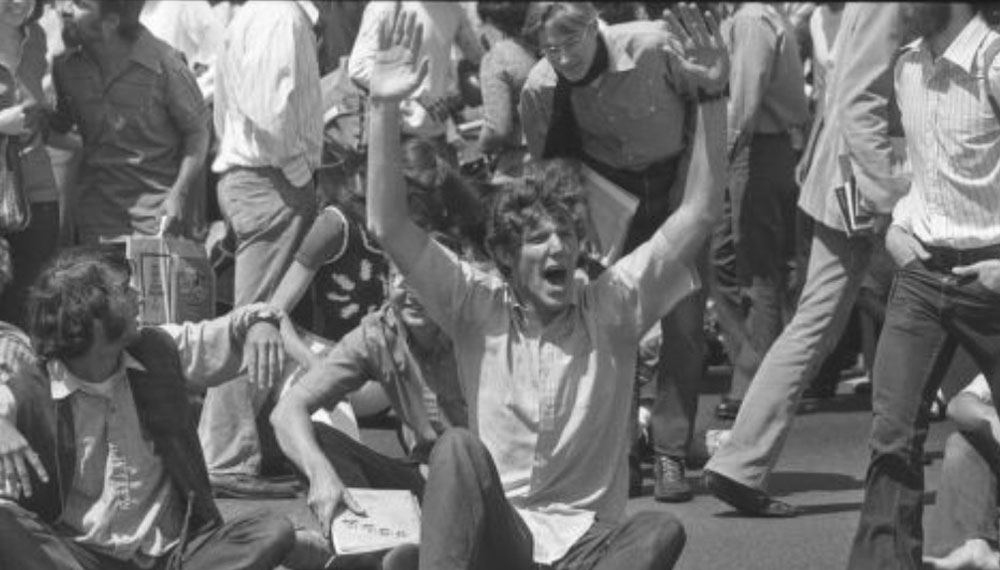
Bill Walton’s Impediment
In 1972, UCLA basketball star Bill Walton took part in an anti-Vietnam War protest on campus. Walton, along with a bunch of other students, sat down in the middle of the intersection on Wilshire Boulevard and Veteran Avenue with his hands raised. Walton ended up being arrested for his protest.

The Medalists' Nonchalance
400-meter medalists at the 1972 Munich Olympic Games, Vince Matthews and Wayne Collet, stood on the victory stand in their sweatsuits. They conversed during the anthem while assuming relaxed postures, then afterwards Matthews twirled his medal in his finger. This behavior showed a refusal to stand at attention in a country struggling with racism.
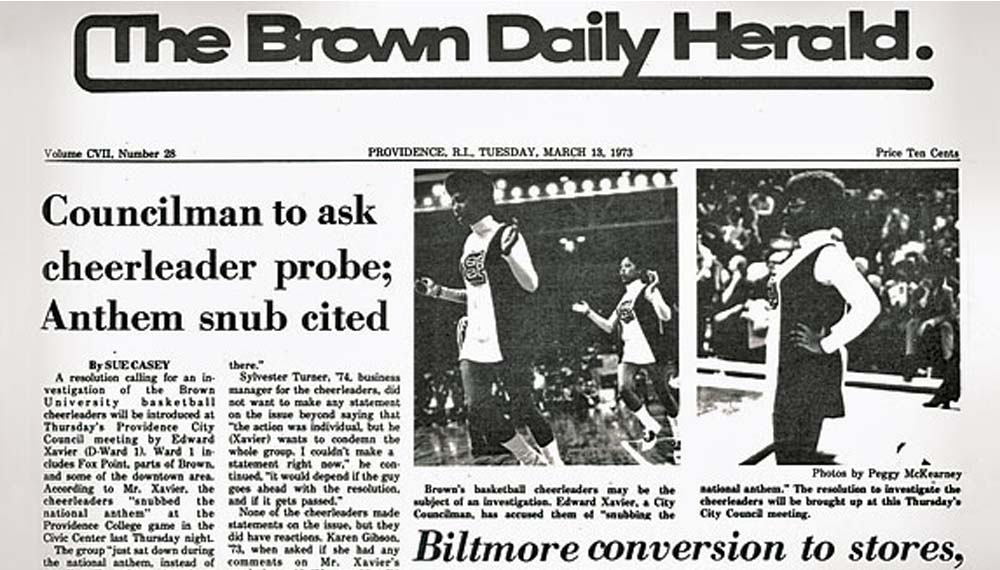
Cheerleaders' Seats
In 1973, members of the Brown University cheerleading team chose to remain seated for the national anthem at a basketball game at Providence Civic Center. According to the team’s captain, the team was taken off-guard when the anthem played, as the university had stopped doing so in response to sitting becoming commonplace for Black athletes during the time.
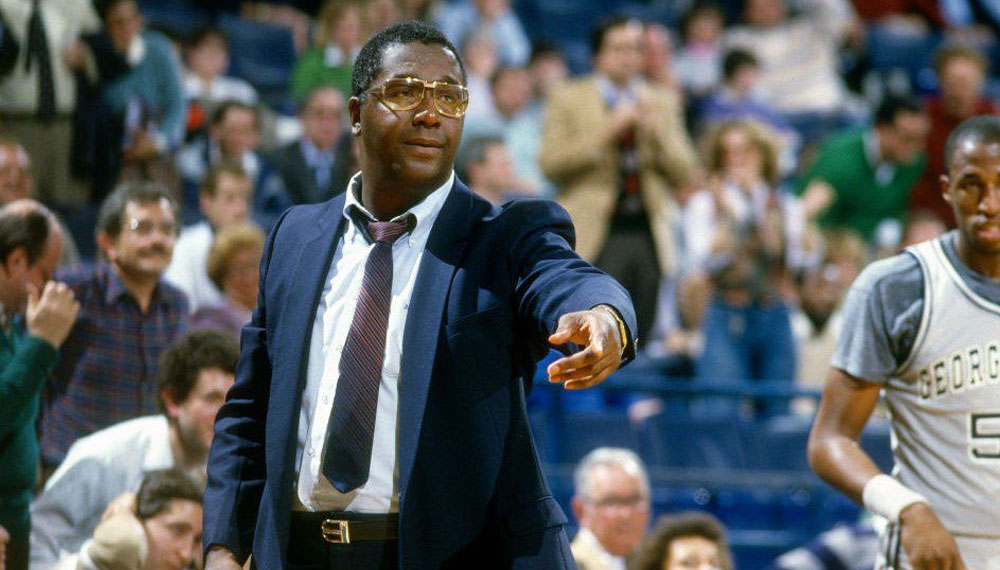
John Thompson’s Walk-Out
In 1989, head coach of the Georgetown men’s basketball team John Thompson left the court before the game against Boston College began. His departure represented a protest against the newly passed Proposition 48, which denied athletic scholarships to students who did not meet the rule’s academic standards—and disproportionately affected Black students.
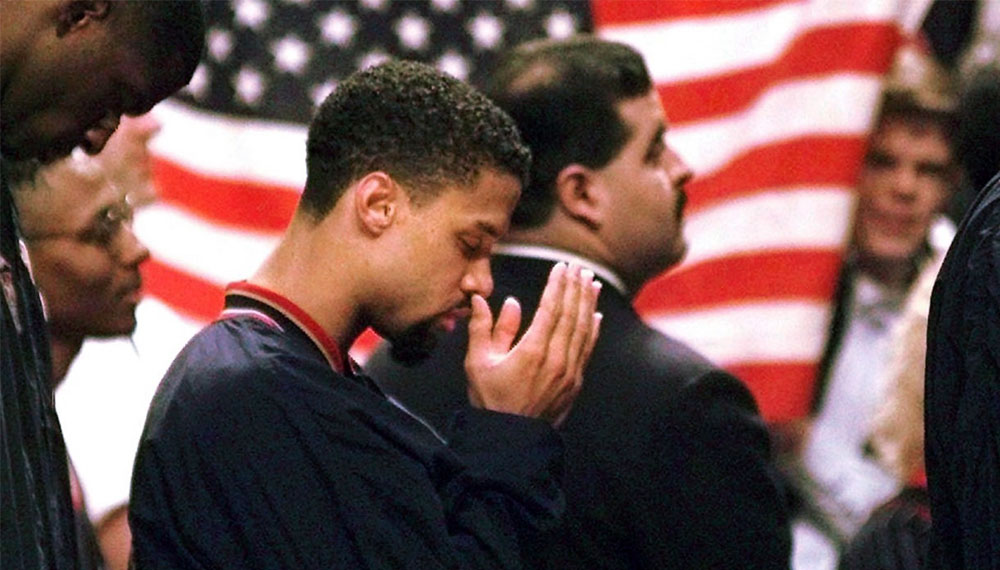
Abdul-Rauf’s Bowed Head
During the 1996 NBA season, Mahmoud Abdul-Rauf of the Denver Nuggets began staying in the locker room for the national anthem. After being suspended for one game, the league compromised to allow him to pray with his head bowed during the anthem, as long as he stands.
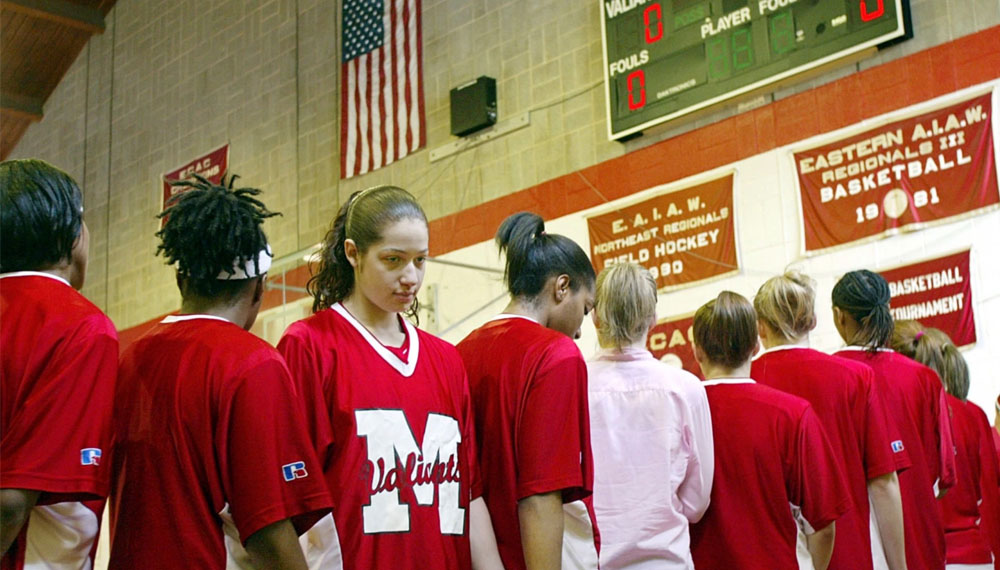
Toni Smith’s Back
21-year-old basketball player of Manhattanville College, Toni Smith, faced away from the United States flag as the anthem played before her game. Her public opposition against America’s role in the Iraq war sparked national discussions and controversy.
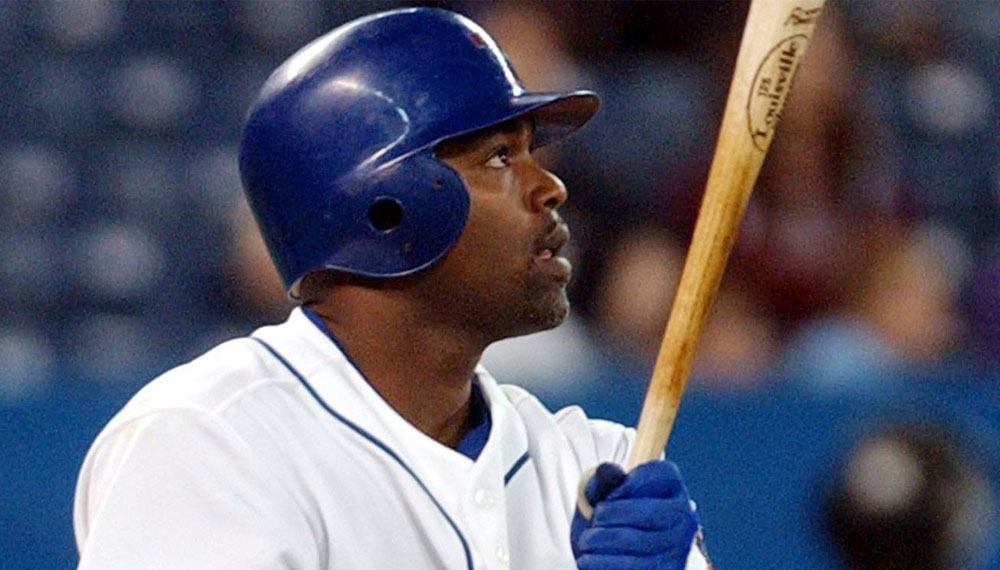
Carlos Delgado’s Refusal
In 2004, Carlos Delgado of the Toronto Blue Jays sat during “God Bless America”, which had started being played during the seventh inning stretch after 9/11. Delgado was protesting the use of a Puerto Rican island as a weapons testing ground for the U.S. Navy. He was also showing his dissent for the Iraq and Afghanistan wars.
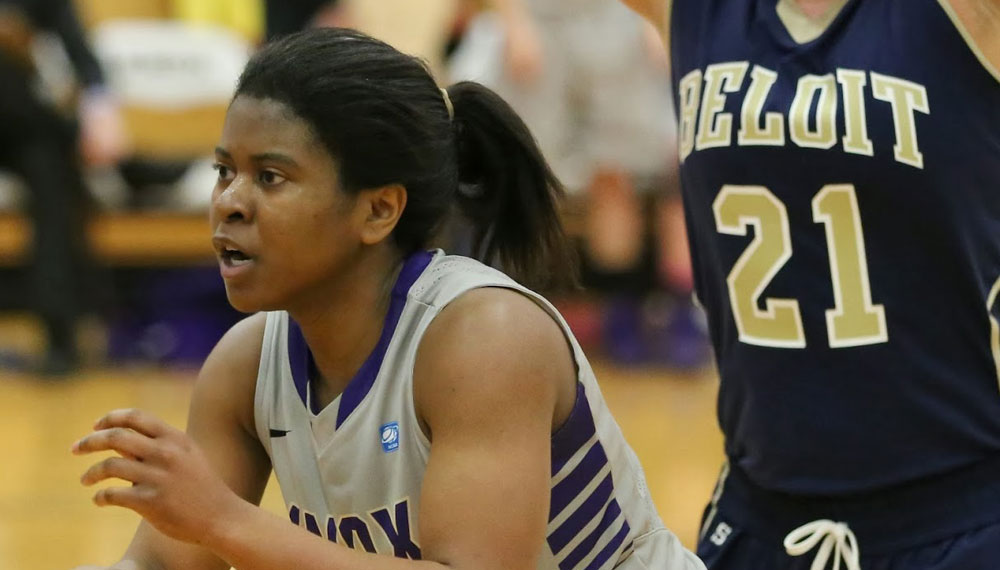
Ariyana Smith’s Sequence
During the anthem, Ariyana Smith, a Knox College basketball player, raised her hand and knelt. At the last line, Smith collapsed and laid on the ground for four and a half minutes, representative of the time that Michael Brown had laid in the street after being killed by police in Ferguson, Missouri. She is the first athlete to support the “Black Lives Matter” movement in a sports setting.
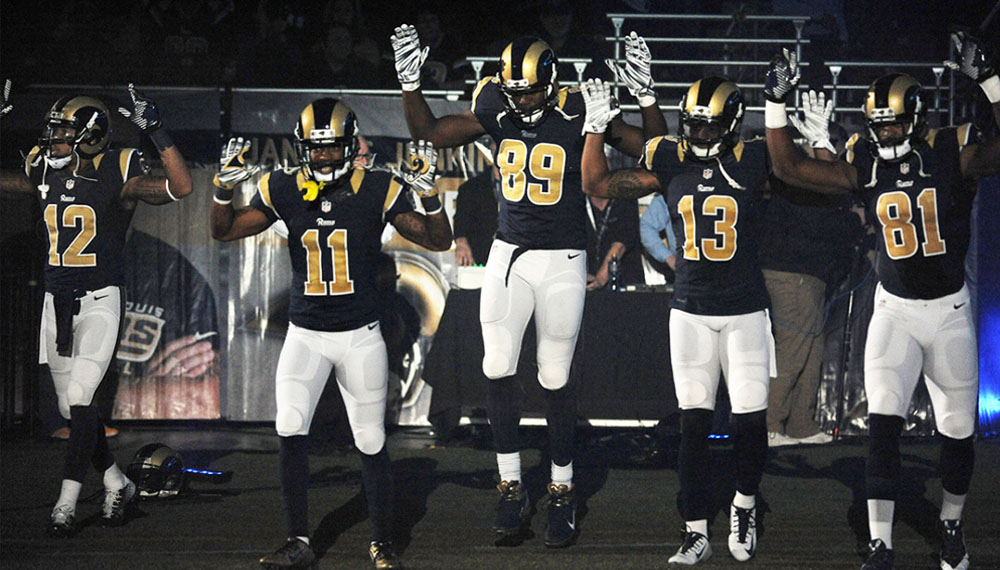
The Rams’ Gesture
Right after Ariyana Smith’s display of activism, five St. Louis Rams players, Kenny Britt, Stedman Bailey, Chris Givens, Tavon Austin, and Jared Cook ran out of the tunnel during their pregame introductions with their hands raised in the “hands up, don’t shoot” gesture. Like Smith, they were protesting the shooting of Michael Brown in Ferguson.
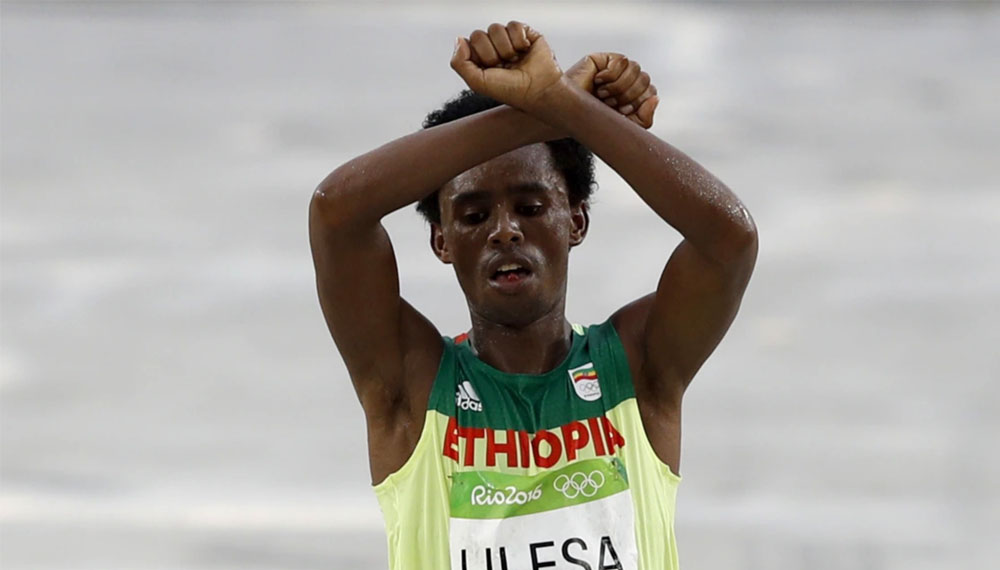
Feyisa Lilesa’s Cross
Ethiopian marathon runner Feyisa Lilesa crossed his arms over his head in a shackled gesture as he crossed the finish line second at the Rio Olympics. He was protesting the oppression and marginalization of the Oromo ethnic group by the Ethiopian government.
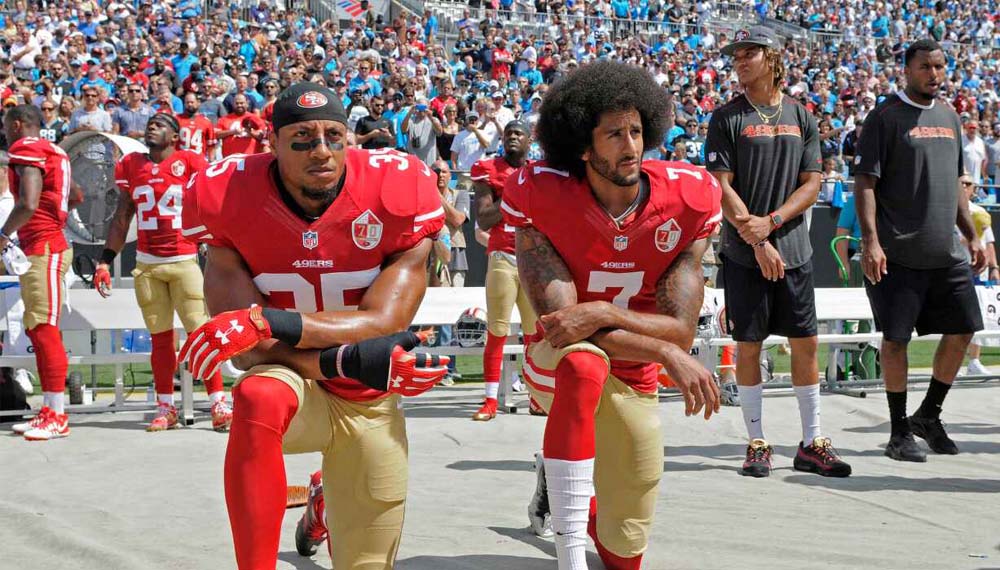
Colin Kaepernick’s Knee
San Francisco 49ers quarterback Colin Kaepernick knelt during the national anthem for the first time in August of 2016. His decision sparked widespread controversy and condemnation while also inspiring other athletes to follow his lead. Kaepernick says that kneeling was his way to call attention to racial injustice and police brutality in America.
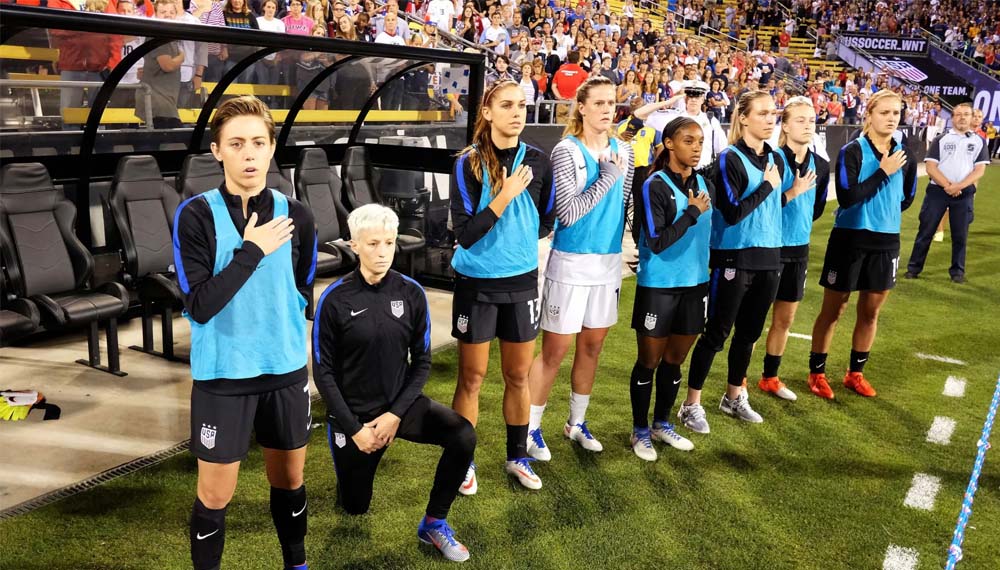
Megan Rapinoe’s Support
A few weeks after Kaepernick started kneeling, soccer star Megan Rapinoe chose to kneel in solidarity with him and his protest against police brutality. She first knelt during the anthem before a couple of games for the National Women’s Soccer League, and continued to do so during the next USWNT friendly versus Thailand.
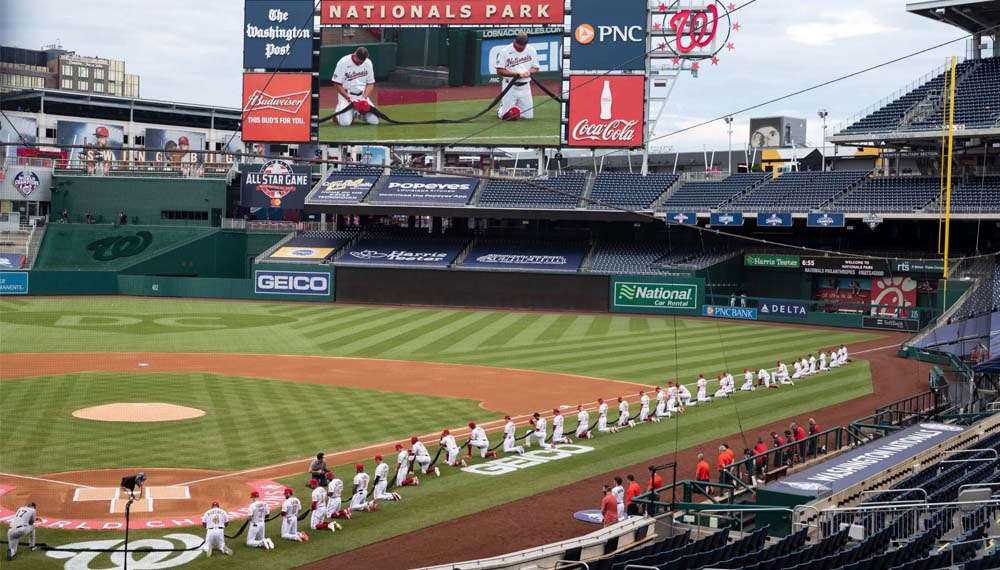
The MLB’s Demonstration
Before the first pitch of the 2020 MLB Opening Day, Washington Nationals and New York Yankees players in Nationals Park held a single 200-yard black cloth to show solidarity for the Black Lives Matter movement. After the anthem concluded, many players got on their knees and knelt. This demonstration occurred in 14 other MLB stadiums that July day.

The NBA’s Unity
At the start of the shortened 2020 NBA season, players and coaches from the New Orleans Pelicans, Utah Jazz, Los Angeles Lakers, and Los Angeles Clippers knelt during the Star-Spangled Banner. The action was inspired by Kaepernick, who had been brought back into the news during the Black Lives Matter protests of 2020.

Raven Saunders’ X
At the Tokyo Olympic Games, American Raven Saunders, the silver medalist in shot put, raised her arms above her head and made an “X” with her wrists while on the podium. In Saunders’ own words, she was representing “the intersection of where all people who are oppressed meet.”
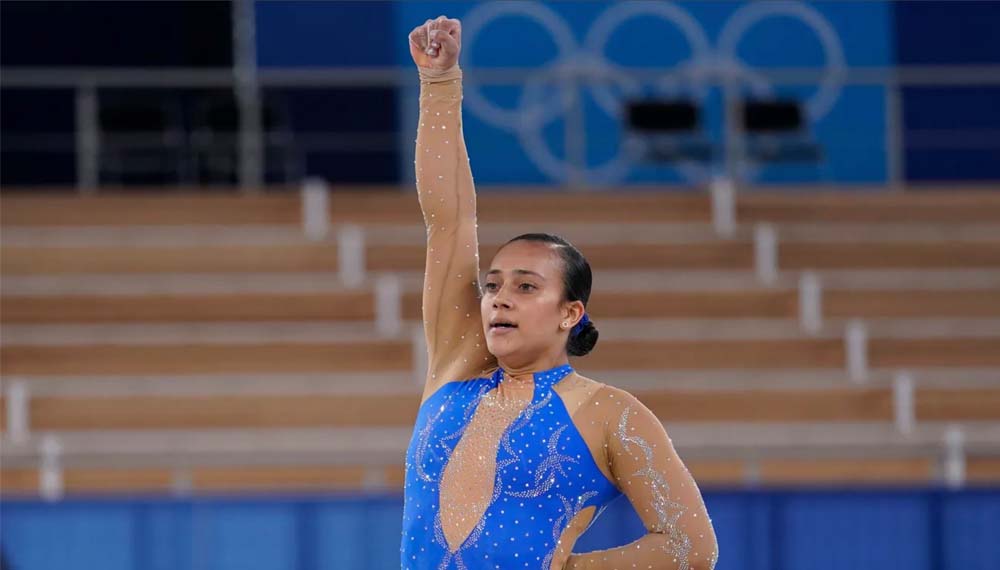
Luciana Alvarado’s Routine
At the conclusion of her floor exercise routine at the Tokyo Olympic Games, Costa Rican gymnast Luciana Alvarado knelt on the mat and raised a fist in the air to call attention to the Black Lives Matter movement. Alvarado’s gesture was also a nod to the fight for equality and to the history for Black people in her own country.